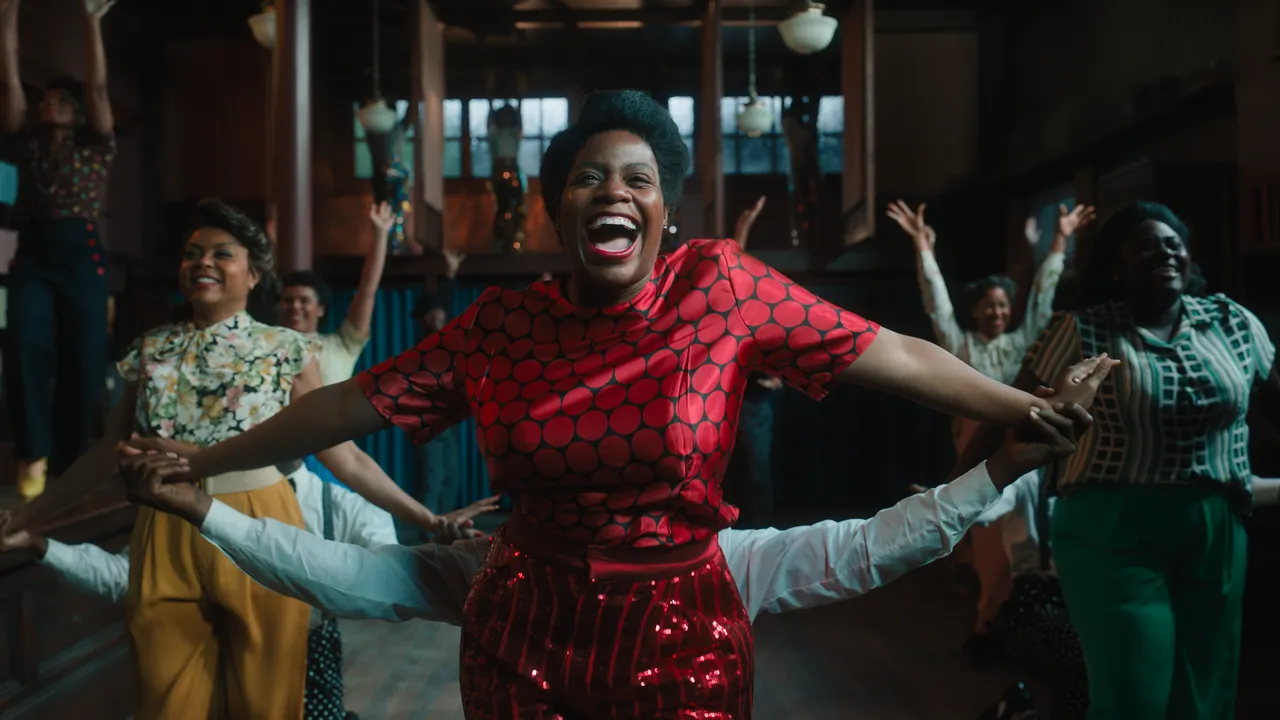
Following up an iconic story with a new retelling is always a daunting task and adapting a story as beloved as this one can be even more challenging. The Color Purple follows the same story many are familiar with from previous iterations. Celie (portrayed as a young woman by Phylicia Pearl Mpasi and as an adult by Fantasia Barrino), an African-American woman living in the South who survives incredible abuse and bigotry. After Celie’s abusive father marries her off to the equally debasing “Mister” Albert Johnson (Colman Domingo), things go from bad to worse, leaving Celie to find companionship anywhere she can. She perseveres, holding on to her dream of one day being reunited with her sister in Africa.
Though named after the iconic 1982 novel and 1985 film of the same name, this iteration of The Color Purple is based on the Broadway musical adaptation which ran from 2005 through 2008. Its music theater roots can be felt throughout the film, particularly through the film’s first two acts which feel more music theatrical than something cinematic. The musical numbers are extremely well choreographed and the songs themselves are very good, they just dominate much of the film’s early runtime. The non-musical scenes during this portion of the film come across more as a play that are just bridges to the film’s musical numbers than part of a narrative that stands on its own. While it would appear that this is a major handicap that would hamper The Color Purple’s as a whole, a marvelous third act is when the film finally finds its footing narratively, powerfully establishing its theme of forgiveness and making amends to those we have wronged. Aside from the increased musicality, this iteration of The Color Purple feels more hopeful and bright due to its conclusion that not only sees the reunion of Celie and Nettie as in the original, but a more flesh out tale of attempted redemption for Mister as he seeks to make amends for his wrongdoings. The film’s ending scene of the cast circled around, engaging in song amidst the sunlight provides a picture of communal unity that differentiates this film from previous endings focused solely on Celie’s personal story.
Visually, not enough can be said about the vibrancy and wonder of The Color Purple’s cinematography as the costume and set design, coloring, and lighting all combine to create a visual smorgasboard. Director Blitz Bazawule, Director of Photography Dan Laustsen, and editor Jon Poll utilize seamless scene transitions including some stellar match cuts that at times just meld scenes one into the other without almost any hint of differentiation. The film’s use of sunlight to illuminate scenes is incredible to witness, peeking through windows and curtains to give it a natural glow that makes the film’s set appear almost golden. One of the film’s most notable scenes is a chronology of the passage of time utilizing a rotating camera shot going as the seasons pass by outside of the window of Mister’s home and Celie ages into an adult. All of The Color Purple’s visual and musical greatness reaches its apex during Celie and Shug’s duet on a stage that hearkens back to The Nicholas Brothers’ legendary “Jumpin’ Jive” dance routine in 1943’s Stormy Weather.
The stellar performance in that number is no exception for the film as a whole as the stacked cast in The Color Purple all live up to their stellar reputations, led by Barrino and Danielle Brooks as Sofia. Both actresses previously played these roles on Broadway so their ability to nail the musical numbers should come as no surprise, but they each are also able to impart the necessary emotion in the narrative parts of the script that cover the abuses and struggles that Celie and Sofia both face. Brooks in particular impresses with how she is able to leave her own mark on the character of Sofia in light of the iconic portrayal offered by Oprah Winfrey in the 1985 version. Brooks makes the character her own almost from the first frame she’s onscreen. The same can be said for Barrino’s Celie as well as Domingo’s performance as Mister. Glover’s menacing version left quite the imprint on anyone who saw it upon the original film’s release, but Domingo is able to provide his own spin here, imparting the character with a bit more sympathy and moving it from an evil caricature to someone more whole and humanistic. This portrayal of Mister was key in brightening up the film’s tone overall and is something Domingo should be credited highly for pulling off.
The Color Purple is extremely well done as a musical, but temper your expectations if you’re expecting a narrative film, particularly one as rich as its 1985 predecessor. This doesn’t hurt the film fully however as once the narrative is fleshed out more and allowed to breathe, the film feels whole moves into fully cinematic territory. It is wondrous to observe throughout its runtime however with some of the best cinematography, set design, and costuming you will see in a film this year. The cast all offer stellar performances with Fantasia Barrino, Danielle Brooks, and Colman Domingo leading the way. The first two will be highly competitive during awards season with Brooks a clear frontrunner for Best Supporting Actress of the year. Taraji P. Henson, Corey Hawkins, Halle Bailey, and Phylicia Pearl Mpasi round out the rest of the cast and do well in making these iconic characters their own without being overshadowed by what came before. The same can be said for the film as a whole, breathing new life into an old, beloved story, carving out new greatness for a new generation of viewers.
Image: Warner Bros.

